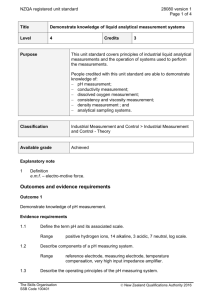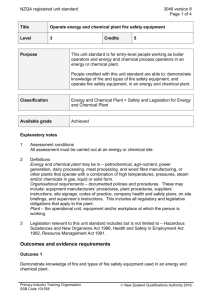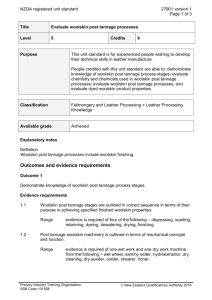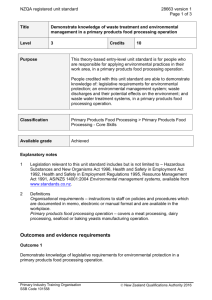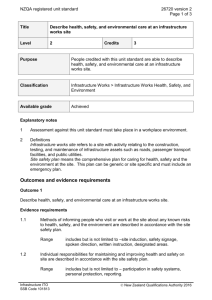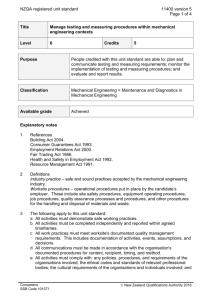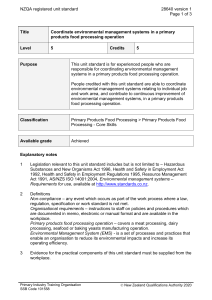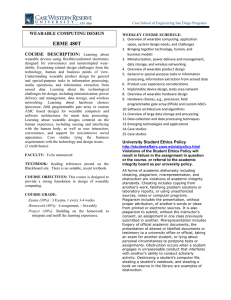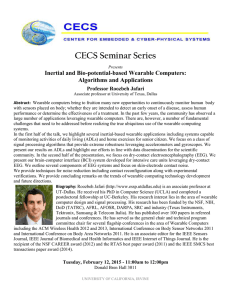67KB - NZQA
advertisement
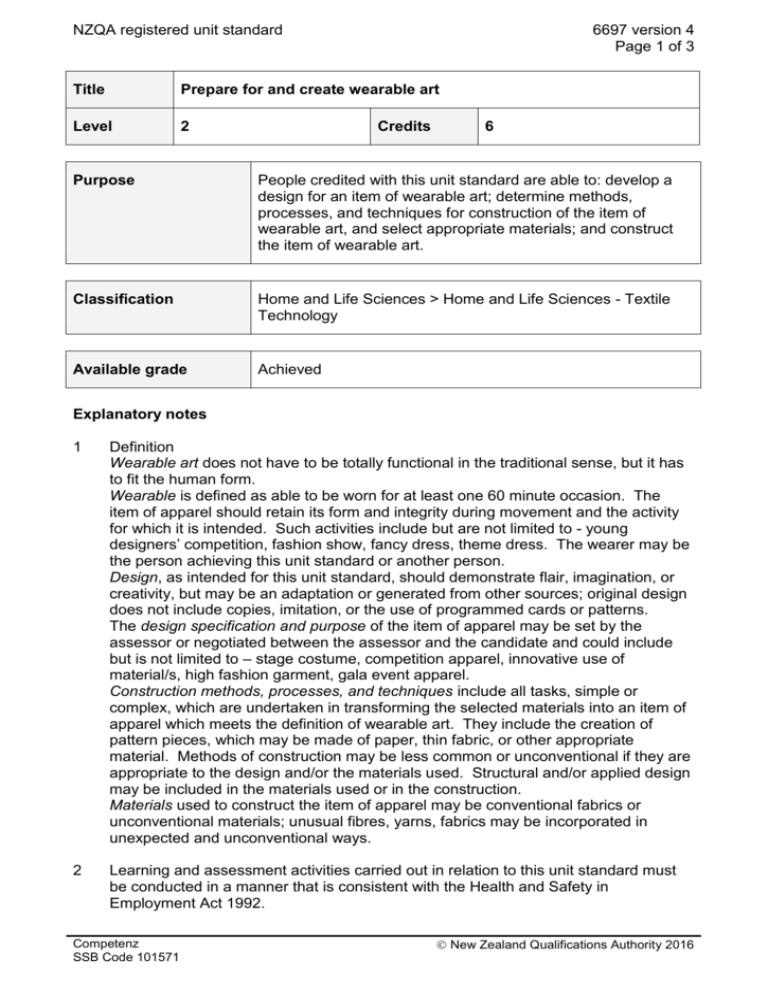
NZQA registered unit standard 6697 version 4 Page 1 of 3 Title Prepare for and create wearable art Level 2 Credits 6 Purpose People credited with this unit standard are able to: develop a design for an item of wearable art; determine methods, processes, and techniques for construction of the item of wearable art, and select appropriate materials; and construct the item of wearable art. Classification Home and Life Sciences > Home and Life Sciences - Textile Technology Available grade Achieved Explanatory notes 1 Definition Wearable art does not have to be totally functional in the traditional sense, but it has to fit the human form. Wearable is defined as able to be worn for at least one 60 minute occasion. The item of apparel should retain its form and integrity during movement and the activity for which it is intended. Such activities include but are not limited to - young designers’ competition, fashion show, fancy dress, theme dress. The wearer may be the person achieving this unit standard or another person. Design, as intended for this unit standard, should demonstrate flair, imagination, or creativity, but may be an adaptation or generated from other sources; original design does not include copies, imitation, or the use of programmed cards or patterns. The design specification and purpose of the item of apparel may be set by the assessor or negotiated between the assessor and the candidate and could include but is not limited to – stage costume, competition apparel, innovative use of material/s, high fashion garment, gala event apparel. Construction methods, processes, and techniques include all tasks, simple or complex, which are undertaken in transforming the selected materials into an item of apparel which meets the definition of wearable art. They include the creation of pattern pieces, which may be made of paper, thin fabric, or other appropriate material. Methods of construction may be less common or unconventional if they are appropriate to the design and/or the materials used. Structural and/or applied design may be included in the materials used or in the construction. Materials used to construct the item of apparel may be conventional fabrics or unconventional materials; unusual fibres, yarns, fabrics may be incorporated in unexpected and unconventional ways. 2 Learning and assessment activities carried out in relation to this unit standard must be conducted in a manner that is consistent with the Health and Safety in Employment Act 1992. Competenz SSB Code 101571 New Zealand Qualifications Authority 2016 NZQA registered unit standard 6697 version 4 Page 2 of 3 Outcomes and evidence requirements Outcome 1 Develop a design for an item of wearable art. Evidence requirements 1.1 The design specification and purpose are agreed and documented for assessment purposes. 1.2 Criteria developed for the design match the specified purpose. 1.3 Design, as developed, meets the criteria. Outcome 2 Determine methods, processes, and techniques for construction of the item of wearable art, and select appropriate materials. Evidence requirements 2.1 Construction requirements are identified to match the specified purpose. 2.2 The construction methods, processes, and techniques are developed and tested to enable selection of materials. 2.3 Materials, as selected, are suitable for the determined construction methods, processes, and techniques. Outcome 3 Construct the item of wearable art. Evidence requirements 3.1 The construction methods, processes, and techniques used meet the requirements of the specified purpose and incorporate the selected materials. 3.2 The constructed item meets the requirements of the design specification and purpose, and is wearable. 3.3 The evaluation identifies any improvements that could be made in further wearable art construction, or justifies not making any changes where improvements are not required. Planned review date Competenz SSB Code 101571 31 December 2014 New Zealand Qualifications Authority 2016 NZQA registered unit standard 6697 version 4 Page 3 of 3 Status information and last date for assessment for superseded versions Process Version Date Last Date for Assessment Registration 1 26 March 1996 31 December 2013 Review 2 19 October 1999 31 December 2013 Review 3 28 November 2002 31 December 2013 Review 4 16 August 2012 N/A Consent and Moderation Requirements (CMR) reference 0134 This CMR can be accessed at http://www.nzqa.govt.nz/framework/search/index.do. Please note Providers must be granted consent to assess against standards (accredited) by NZQA, before they can report credits from assessment against unit standards or deliver courses of study leading to that assessment. Industry Training Organisations must be granted consent to assess against standards by NZQA before they can register credits from assessment against unit standards. Providers and Industry Training Organisations, which have been granted consent and which are assessing against unit standards must engage with the moderation system that applies to those standards. Requirements for consent to assess and an outline of the moderation system that applies to this standard are outlined in the Consent and Moderation Requirements (CMR). The CMR also includes useful information about special requirements for organisations wishing to develop education and training programmes, such as minimum qualifications for tutors and assessors, and special resource requirements. Comments on this unit standard Please contact Competenz info@Competenz.org.nz if you wish to suggest changes to the content of this unit standard. Competenz SSB Code 101571 New Zealand Qualifications Authority 2016



